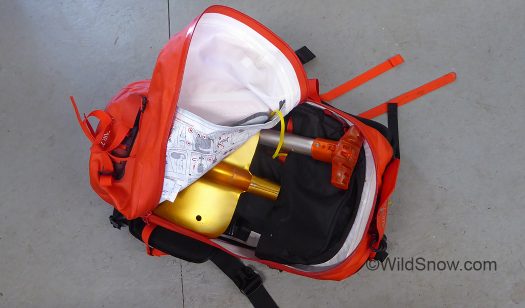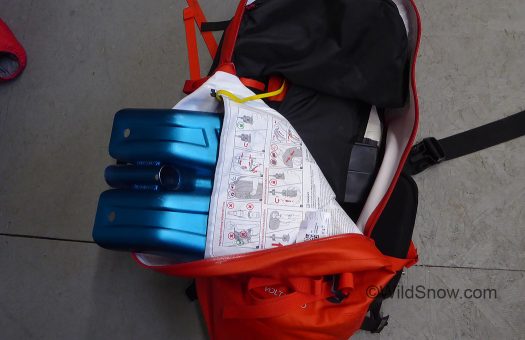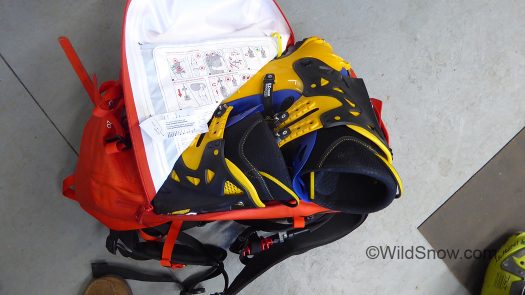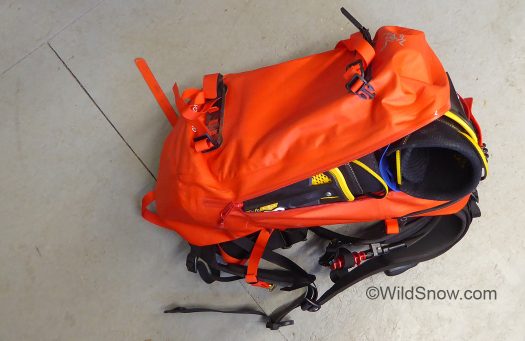I found the Arcteryx Volair 30 airbag backpack to be heavy and unwieldy for the type of tours I usually do. It’s returned to Arcteryx. I’m told they’re curious to see how hundreds of inflations junked on the blower (proudly durable, by the way). They swapped me for a 20, which while still surprisingly heavy is a compact little number that hauls as smooth as one can expect when you’re schlepping an extra kilo or so over what you’re used to. As a legit test, while I didn’t receive the pack early enough in the season for “airline travel testing” during my ISPO journey last winter, I did use it for ski touring this past winter in Colorado. The story in photos.
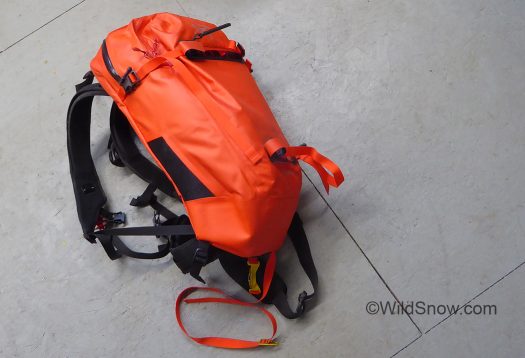
Sweet Voltair 20 little number is just about right for me. (Available in black or red.) Back panel height is medium. Notable volume for normal day tours without glacier gear. I’d actually prefer if the sack was slightly smaller, about an inch less in the direction out from user’s back, for less of a “bubble” effect when it’s on the back. Also visible in this photo, note the up-tapered sack bottom. In my opinion that’s the opposite of ideal for a ski pack as it pushes the load up higher on your back, away from your center of gravity. Not so noticeable in a non-airbag pack, but with the heavy battery already located about halfway up the torso, and the airbag balloon and plumbing up at the top, I noticed a somewhat top-heavy feeling unless I deliberately stowed all my heavy stuff down low, especially water.
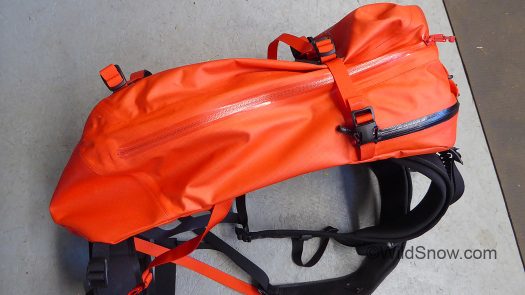
Compression straps are part of the answer to compensating for a pack with this sort of shape. You get them at the top, but not at the bottom.
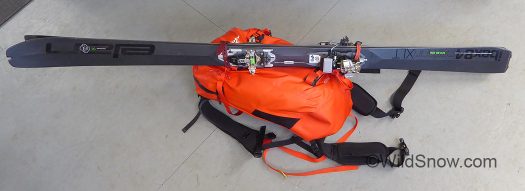
There is no dedicated diagonal ski carry system, but it’s easily rigged with a few accessory straps. The stock straps work well for shorter skis, carried vertically. Dedicated lashing is there for one ice axe, for two tools you’d need to rig something. Ok by me, this is a ski touring pack not an alpine climbing sack.
Total weight with battery 3426 grams, 7.5 pounds
Battery 804 grams
Weight without battery 2622
Considering a nice optimized gas powered backpack weighs 2100 grams (4.6 pounds), is it perhaps excessive to haul around fully three pounds more just so you can inflate the pack more than once, or easily travel by air? You can be the judge of that. Me, I’ll pick the lighter pack when possible, but have to admit that being able to hop on a commercial jet with a fully functional balloon pack is an enticing option.
Conclusions: If additional weight as detailed above is worth the fun or necessity of multiple inflations — without compressed gas issues — this is your rucksack. On the other hand, for those of you who can configure a rig with carbon gas cylinder, you’re clearly enjoying much less added mass in comparison. Diagonal ski carry has to be rigged, is easy to do so. Interesting tapered sack bottom forces weight higher, perhaps nice for climbing but is that what you want for ski touring? Overall build quality is Arcteryx marvellous. Price is stratospheric but that means that sale discounts are potentially more substantial. Due to my testing of previous 30 liter, know that the “fan” and battery in these things are bomber. That pack was probably inflated at least a hundred times and kept on trucking.
For details on this pack’s airbag system, and more thoughts on the Arcteryx Voltairs, check out all our blog posts on the subject.
Shopping? I’d watch the price at backcountry.com
WildSnow.com publisher emeritus and founder Lou (Louis Dawson) has a 50+ years career in climbing, backcountry skiing and ski mountaineering. He was the first person in history to ski down all 54 Colorado 14,000-foot peaks, has authored numerous books about about backcountry skiing, and has skied from the summit of Denali in Alaska, North America’s highest mountain.

